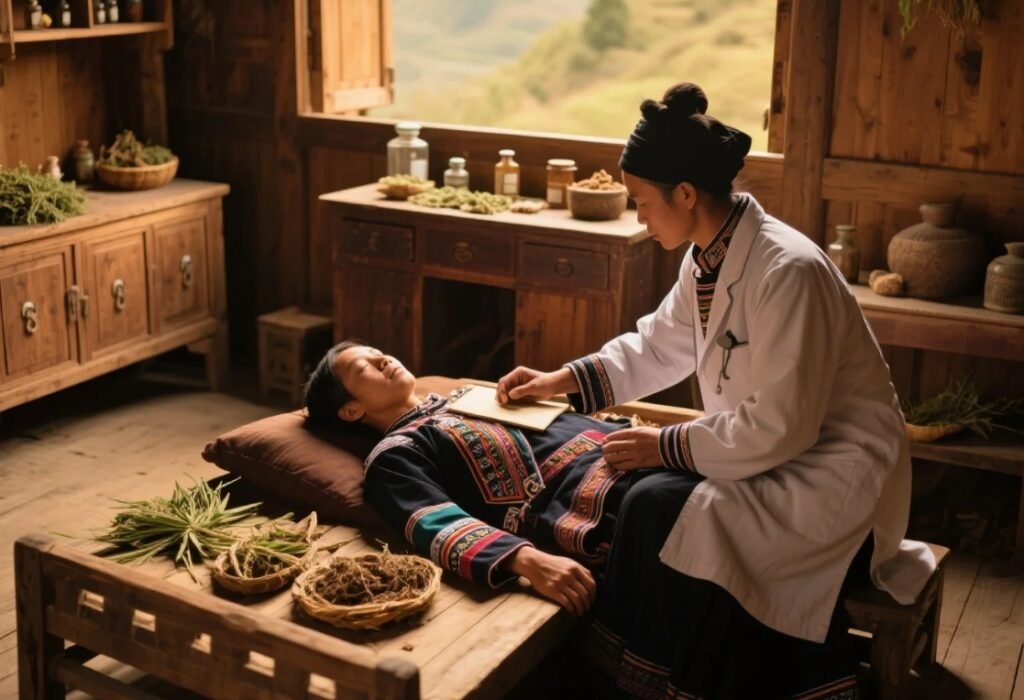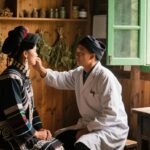Dix Cet Ves ( Acne)
Overview
In Miao medicine, acne is called Dix Cet Ves. It refers to the papules or small nodules that appear on the faces of adolescents. In Traditional Chinese Medicine, acne is a chronic inflammation of the hair follicles and sebaceous glands, characterized by papules on the face, chest, and back with white “rice‑grain” pustules—commonly known as “youth pimples.” In Western medicine, it is called acne vulgaris, presenting with scattered comedones, papules, pustules, nodules, cysts, and oily skin.
Classification in Miao-Medicine
This condition is considered a minor disorder and belongs to the category of Cold–Heat Complex Disease.
Etiology
Acne often relates to physical development and most commonly appears during puberty.
Pathogenesis
Wind‑heat toxic pathogens invade the body. During adolescence, Qi and Blood are abundant, and the struggle between pathogenic heat and the body’s defenses produces skin eruptions of varying sizes.

Key Diagnostic Points
Diagnosis is based on the appearance of papules on the face, chest, or back during puberty.
Differential Diagnosis
Jiang Gang Ge Liu ( Furuncle)
Caused by poor hygiene and skin invasion by filth, furuncles occur mostly in summer and autumn. They begin as hard, red nodules that develop yellow‑white pustules after a few days. They rupture and (helps manage) quickly. Severe cases form large, walnut‑sized, painful swellings that soften and discharge pus, then recur—distinguished from acne by their acute course and deeper infection.
Pattern Differentiation & Treatment
Clinical Manifestation: Primarily affects adolescents of both sexes. Some recover quickly; others suffer for years. Lesions appear on the face, occasionally on the chest and back, as papules the size of a pinhead to a mung bean, surrounded by redness. Pressure releases milky white or yellowish exudate; some lesions progress to small pustules.
Pattern: Cold–Heat Complex Disease.
Treatment Principle: Clear Lung and Kidney fire.
Herbal Formula
- Loquat Leaf (pipaye) 10g
- Fortune’s Mahonia (shidagonglao) 15g
- Mulberry Root Bark (sangbaipi) 15g
- Gardenia Fruit (zhizi) 10 g
Decoct in water and take orally.
pipaye is cold and bitter—enters the Heat channels to clear heat, transform phlegm, invigorate blood and unbind the channels. shidagonglao is cold and bitter—drains fire and detoxifies. sangbaipi is warm and sweet—enters the Cold channels to clear Lung fire and reduce swelling. zhizi is cold and bitter—enters the Heat channels to clear heat and detoxify.
Preventive Care
- Wash the face regularly with warm water or sulfur soap; if skin is very oily, wash 2–4 times daily.
- Avoid spicy or stimulating foods (chili, alcohol); minimize greasy and sugary foods; eat plenty of fresh vegetables and fruits; maintain regular bowel movements.
- Do not overuse cosmetics, especially powder‑based products that can block pores. Never squeeze pimples by hand to avoid spreading inflammation and leaving pitted scars.
Commentary
Miao-medicine believes acne arises mainly from physical development combined with invasion of wind‑heat toxins. Abundant Qi and Blood in adolescents struggle with pathogenic factors, leading to eruptions. Miao practitioners favor herbs such as sangbaipi (Mulberry Root Bark), kushen (Sophora root), and zhizi (Gardenia Fruit) to clear heat and drain fire. Self‑care focuses on healthy diet and lifestyle habits, regular exercise, and soothing music to relieve stress.



Leave a Reply